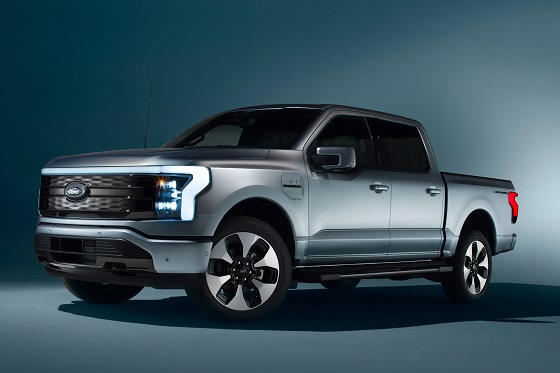Automotive
From Nazis to hippies: End of the road for Volkswagen Beetle

FRANKFURT — Volkswagen is halting production of the last version of its Beetle model this week at its plant in Puebla, Mexico. It’s the end of the road for a vehicle that has symbolized many things over a history spanning eight decades since 1938.
It has been: a part of Germany’s darkest hours as a never-realized Nazi prestige project. A symbol of Germany’s postwar economic renaissance and rising middle-class prosperity. An example of globalization, sold and recognized all over the world. An emblem of the 1960s counterculture in the United States. Above all, the car remains a landmark in design, as recognizable as the Coca-Cola bottle.

The car’s original design — a rounded silhouette with seating for four or five, nearly vertical windshield and the air-cooled engine in the rear — can be traced back to Austrian engineer Ferdinand Porsche, who was hired to fulfil Adolf Hitler’s project for a “people’s car” that would spread auto ownership the way the Ford Model T had in the U.S.

Aspects of the car bore similarities to the Tatra T97, made in Czechoslovakia in 1937, and to sketches by Hungarian engineer Bela Barenyi published in 1934. Mass production of what was called the KdF-Wagen, based on the acronym of the Nazi labour organization under whose auspices it was to be sold, was cancelled due to World War II. Instead, the massive new plant in what was then countryside east of Hanover turned out military vehicles, using forced labourers from all over Europe under miserable conditions.
Re-launched as a civilian carmaker under supervision of the British occupation authorities, the Volkswagen factory was transferred in 1949 to the Germany government and the state of Lower Saxony, which still owns part of the company. By 1955, the millionth Beetle — officially called the Type 1 — had rolled off the assembly line in what was now the town of Wolfsburg.

The United States became Volkswagen’s most important foreign market, peaking at 563,522 cars in 1968, or 40% of production. Unconventional, sometimes humorous advertising from agency Doyle Dane Bernbach urged car buyers to “Think small.”
“Unlike in West Germany, where its low price, quality and durability stood for a new postwar normality, in the United States the Beetle’s characteristics lent it a profoundly unconventional air in a car culture dominated by size and showmanship,” wrote Bernhard Rieger in his 2013 history, “The People’s Car.”
Production at Wolfsburg ended in 1978 as newer front drive models like the Golf took over. But the Beetle wasn’t dead yet. Production went on in Mexico from 1967 until 2003 — longer than the car had been made in Germany. Nicknamed the “vochito,” the car made itself at home as a rugged, Mexican-made “carro del pueblo.”

The New Beetle — a completely retro version build on a modified Golf platform — resurrected some of the old Beetle’s cute, unconventional aura in 1998 under CEO Ferdinand Piech, Ferdinand Porsche’s grandson. In 2012, the Beetle’s design was made a bit sleeker.

The end of the Beetle comes at a turning point for Volkswagen as it rebounds from a scandal over cars rigged to cheat on diesel emissions tests. The company is gearing up for mass production of the battery-driven compact ID.3, a car that the company predicts will have an impact like that of the Beetle and the Golf by bringing electric mobility to a mass market.
The last of 5,961 Final Edition versions of the Beetle is headed for a museum after ceremonies in Puebla on July 10 to mark the end of production.
___
AP photo blog about the last Volkswagen Beetle: https://bit.ly/32bXuMx
David McHugh, The Associated Press
Automotive
Canada’s EV gamble is starting to backfire

Things have only gone from bad to worse for the global Electric Vehicle industry. And that’s a problem for Canada, because successive Liberal governments have done everything in their power to hitch our cart to that horse.
Earlier this month, the Trump Administration rolled back more Biden-era regulations that effectively served as a back-door EV mandate in the United States. These rules mandated that all passenger cars be able to travel at least 65.1 miles (and for light trucks, 45.2 miles) per gallon of gasoline or diesel, by the year 2031. Since no Internal Combustion Engine (ICE) vehicle could realistically conform to those standards, that would have essentially boxed them out of the market.
Trump’s rolling them back was a fulfillment of his campaign promise to end the Biden Administration’s stealth EV mandates. But it was also a simple recognition of the reality that EVs can’t compete on their own merits.
For proof of that, look no further than our second bit of bad news for EVs: Ford Motor Company has just announced a massive $19.5 billion write-down, almost entirely linked to its aggressive push into EVs. They’ve lost $13 billion on EVs in the past two years alone.
The company invested tens of billions on these go-carts, and lost their shirt when it turned out the market for them was miniscule.
Ford’s EV division president Andrew Frick explained, “Ford is following the customer. We are looking at the market as it is today, not just as everyone predicted it to be five years ago.”
Of course, five years ago, the market was assuming that government subsidies-plus-mandates would create a market for EVs at scale, which hasn’t happened.
As to what this portends for the market, the Wall Street Journal argued, “The company’s pivot from all-electric vehicles is a fresh sign that America’s roadways – after a push to remake them – will continue to look in the near future much like they do today, with a large number of gas-powered cars and trucks and growing use of hybrids.”
And that’s not just true in the U.S. Across the Atlantic, reports suggest the European Union is preparing to delay their own EV mandates to 2040. And the U.K.’s Labour government is considering postponing their own 2030 ICE vehicle ban to align with any EU change in policy.
It’s looking like fewer people around the world will be forced by their governments to buy EVs. Which means that fewer people will be buying EVs.
Now, that is a headache for Canada. Our leaders, at both the federal and provincial levels, have bet big on the success of EVs, investing billions in taxpayer dollars in the hopes of making Canada a major player in the global EV supply chain.
To bolster those investments, Ottawa introduced its Electric Vehicle mandate, requiring 100 per cent of new light-duty vehicle sales to be electric by 2035. This, despite the fact that EVs remain significantly more expensive than gas-and-diesel driven vehicles, they’re poorly suited to Canada’s vast distances and cold climate, and our charging infrastructure is wholly inadequate for a total transition to EVs.
But even if these things weren’t true, there still aren’t enough of us to make the government’s investment make sense. Their entire strategy depends on exporting to foreign markets that are rapidly cooling on EVs.
Collapsing demand south of the border – where the vast majority of the autos we build are sent – means that Canadian EVs will be left without buyers. And postponed (perhaps eventually canceled) mandates in Europe mean that we will be left without a fallback market.
Canadian industry voices are growing louder in their concern. Meanwhile, plants are already idling, scaling back production, or even closing, leaving workers out in the cold.
As GM Canada’s president, Kristian Aquilina, said when announcing her company’s cancellation of the BrightDrop Electric delivery van, “Quite simply, we just have not seen demand for these vehicles climb to the levels that we initially anticipated…. It’s simply a demand and a market-driven response.”
Prime Minister Mark Carney, while sharing much of the same environmental outlook as his predecessor, has already been compelled by economic realities to make a small adjustment – delaying the enforcement of the 2026 EV sales quotas by one year.
But a one-year pause doesn’t solve the problem. It kicks the can down the road.
Mr. Carney must now make a choice. He can double down on this troubled policy, continuing to throw good money after bad, endangering a lot of jobs in our automotive sector, while making transportation more expensive and less reliable for Canadians. Or he can change course: scrap the mandates, end the subsidies, and start putting people and prosperity ahead of ideology.
Here’s hoping he chooses the latter.
The writing is on the wall. Around the world, the forced transition to EVs is crashing into economic reality. If Canada doesn’t wake up soon, we’ll be left holding the bag.
Automotive
Ford’s EV Fiasco Fallout Hits Hard


From the Daily Caller News Foundation
I’ve written frequently here in recent years about the financial fiasco that has hit Ford Motor Company and other big U.S. carmakers who made the fateful decision to go in whole hog in 2021 to feed at the federal subsidy trough wrought on the U.S. economy by the Joe Biden autopen presidency. It was crony capitalism writ large, federal rent seeking on the grandest scale in U.S. history, and only now are the chickens coming home to roost.
Ford announced on Monday that it will be forced to take $19.5 billion in special charges as its management team embarks on a corporate reorganization in a desperate attempt to unwind the financial carnage caused by its failed strategies and investments in the electric vehicles space since 2022.
Cancelled is the Ford F-150 Lightning, the full-size electric pickup that few could afford and fewer wanted to buy, along with planned introductions of a second pricey pickup and fully electric vans and commercial vehicles. Ford will apparently keep making its costly Mustang Mach-E EV while adjusting the car’s features and price to try to make it more competitive. There will be a shift to making more hybrid models and introducing new lines of cheaper EVs and what the company calls “extended range electric vehicles,” or EREVs, which attach a gas-fueled generator to recharge the EV batteries while the car is being driven.
Dear Readers:
As a nonprofit, we are dependent on the generosity of our readers.
Please consider making a small donation of any amount here.
Thank you!
“The $50k, $60k, $70k EVs just weren’t selling; We’re following customers to where the market is,” Farley said. “We’re going to build up our whole lineup of hybrids. It’s gonna be better for the company’s profitability, shareholders and a lot of new American jobs. These really expensive $70k electric trucks, as much as I love the product, they didn’t make sense. But an EREV that goes 700 miles on a tank of gas, for 90% of the time is all-electric, that EREV is a better solution for a Lightning than the current all-electric Lightning.”
It all makes sense to Mr. Farley, but one wonders how much longer the company’s investors will tolerate his presence atop the corporate management pyramid if the company’s financial fortunes don’t turn around fast.
To Ford’s and Farley’s credit, the company has, unlike some of its competitors (GM, for example), been quite transparent in publicly revealing the massive losses it has accumulated in its EV projects since 2022. The company has reported its EV enterprise as a separate business unit called Model-E on its financial filings, enabling everyone to witness its somewhat amazing escalating EV-related losses since 2022:
• 2022 – Net loss of $2.2 billion
• 2023 – Net loss of $4.7 billion
• 2024 – Net loss of $5.1 billion
Add in the company’s $3.6 billion in losses recorded across the first three quarters of 2025, and you arrive at a total of $15.6 billion net losses on EV-related projects and processes in less than four calendar years. Add to that the financial carnage detailed in Monday’s announcement and the damage from the company’s financial electric boogaloo escalates to well above $30 billion with Q4 2025’s damage still to be added to the total.
Ford and Farley have benefited from the fact that the company’s lineup of gas-and-diesel powered cars have remained strongly profitable, resulting in overall corporate profits each year despite the huge EV-related losses. It is also fair to point out that all car companies were under heavy pressure from the Biden government to either produce battery electric vehicles or be penalized by onerous federal regulations.
Now, with the Trump administration rescinding Biden’s harsh mandates and canceling the absurdly unattainable fleet mileage requirements, Ford and other companies will be free to make cars Americans actually want to buy. Better late than never, as they say, but the financial fallout from it all is likely just beginning to be made public.
- David Blackmon is an energy writer and consultant based in Texas. He spent 40 years in the oil and gas business, where he specialized in public policy and communications.
-

 International1 day ago
International1 day agoTrump confirms first American land strike against Venezuelan narco networks
-

 Business1 day ago
Business1 day agoHow convenient: Minnesota day care reports break-in, records gone
-

 Opinion2 days ago
Opinion2 days agoGlobally, 2025 had one of the lowest annual death rates from extreme weather in history
-

 Business1 day ago
Business1 day agoThe great policy challenge for governments in Canada in 2026
-

 Bruce Dowbiggin4 hours ago
Bruce Dowbiggin4 hours agoThe Rise Of The System Engineer: Has Canada Got A Prayer in 2026?
-

 International4 hours ago
International4 hours agoMaduro says he’s “ready” to talk
-

 International4 hours ago
International4 hours agoLOCKED AND LOADED: Trump threatens U.S. response if Iran slaughters protesters




